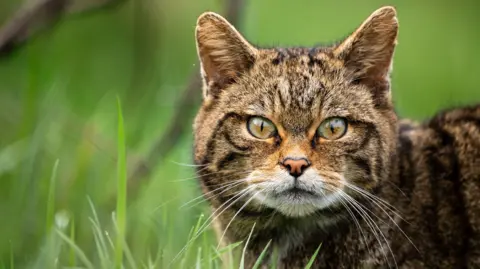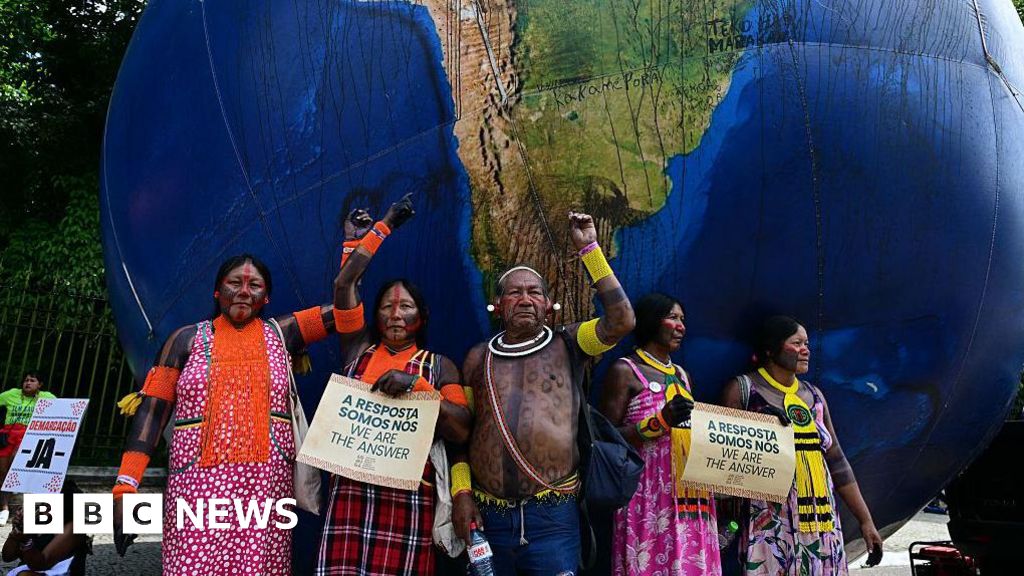Jenny Kumah and Malcolm Prior,BBC News rural affairs team

 Tom Mason
Tom Mason
The South West Wildcat Project hopes to bring back 50 European wildcats across the mid-Devon countryside
Wildcats – one of the UK's most critically endangered mammals – could make a return from extinction in England, conservationists say.
The South West Wildcat Project hopes to bring back 50 European wildcats, from 2028, after a study found a colony could "flourish" in the mid-Devon countryside.
Reintroduction plans follow a breeding scheme to boost numbers in Scotland but there are concerns that the carnivores could pose a threat to poultry, gamebirds and native bird species, as well as a risk of cross-breeding with domestic cats.
The Countryside Alliance said that if that risk was not dealt with, ambitions to sustain a genetically-pure wildcat population would be "doomed to failure".

 Malcolm Prior/BBC
Malcolm Prior/BBC
Wildcats – historically also known as 'woodcats' – were once widespread in Great Britain
The South West Wildlife Project – a partnership led by Devon Wildlife Trust - said independent research by the University of Exeter showed that about 80% of people asked were positive about wildcat reintroduction.
But Oliver Edwards, a beef and sheep farmer on Exmoor, told the BBC he was concerned that reintroducing a predatory species would have "a detrimental effect on the animals and bird life that live here already".
"They say wildcats live on voles. Well, voles are feeding my barn owls so if you reduce the vole population you are having an effect on the barn owls," he explained.
He added that there needed to be wider consultation with farmers and landowners about the best areas to reintroduce the wildcats.
European wildcats – historically also known as woodcats – were once widespread in Great Britain until human persecution and the loss of woodland and rough grass habitats saw them disappear from England and Wales.
Today, the UK's only remaining wildcat population lives in the Highlands of Scotland but, despite being given protected status in 1988, they are now classed as critically endangered and at risk of UK extinction, with as few as 115 remaining in the wild.

 Malcolm Prior/BBC
Malcolm Prior/BBC
Cath Jeffs, from Devon Wildlife Trust, said measures taken to stop other predators from targeting farmed birds would work for wildcats.
Cath Jeffs, the South West Wildcat Project lead for Devon Wildlife Trust, said the team would continue to work closely with locals to deal with any concerns or issues raised over the phased reintroduction and that specific locations had yet to be decided.
She pointed out that most measures taken to stop predators like foxes from targeting poultry or gamebirds would work for wildcats.
She added that it was unlikely there would be a population explosion as wildcats live in low density numbers over wider areas and they would be closely monitored and managed.
"We are absolutely committed to making this happen, but in the right way and at the right time," she added.
The south west of England has been identified as a prime site for reintroduction because of the woodland cover it offers across mid-Devon, connected by other habitats that suit wildcats.
But some critics have suggested the area is more populated than parts of the Highlands where they have been reintroduced before.
They said that could lead to the wildcats breeding with feral domestic cats, with such interbreeding – also known as hybridisation - undermining the whole idea of bringing back the species.
Tim Bonner, chief executive of the Countryside Alliance, said that the organisation was not opposed to "properly planned and managed reintroduction".
But he said there were concerns about the ability to sustain a "genetically pure" population of wildcat because of the threat of hybridisation.
"Reintroducing wildcats in the south-west without addressing this issue would seem to be doomed to failure," he said.
A spokeswoman for the Devon Wildlife Trust said they would tackle the threat of hybridisation by working with local welfare organisations to support a neutering programme for feral and domestic cats in areas where wildcats were introduced.
.png)
 3 hours ago
4
3 hours ago
4








 English (US) ·
English (US) ·